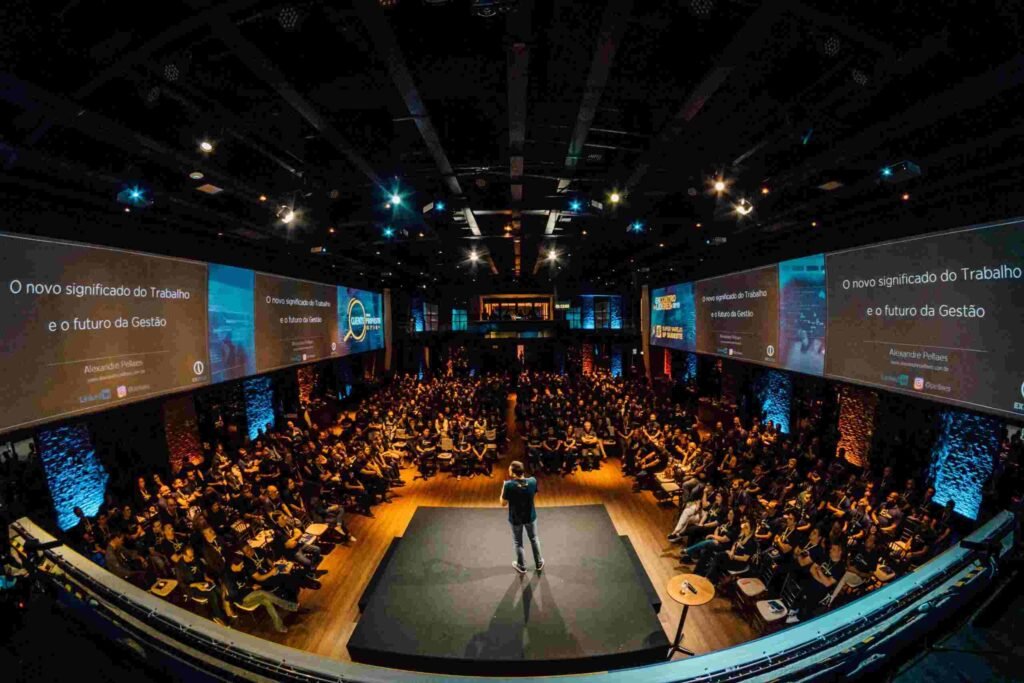Understanding Social Media Metrics
Importance of Social Media Metrics
Social media metrics are essential for brands due to the growing significance of having a presence on social platforms over the last two decades. These metrics provide insights into brand awareness, customer engagement, and sales promotion, giving a detailed overview of how effective marketing strategies are.
Key Social Media Metrics
To understand the impact of your marketing mix social media strategy, it’s important to focus on several key social media metrics. These metrics help assess different aspects of your campaigns and overall social media performance.
Reach and Impressions
- Reach: The total number of unique users who have seen a specific post.
- Impressions: The total number of times a post has been displayed.
These metrics evaluate audience exposure to your content, providing insights into brand visibility and the potential size of your reached audience (MSI Journal).
| Metric | Definition | Purpose |
|---|---|---|
| Reach | Unique users viewing a post | Measure audience size |
| Impressions | Total post displays | Gauge visibility potential |
Engagement Metrics
- Likes: The number of positive reactions to your post.
- Shares: How often the content is shared by users.
- Comments: The volume of user interactions.
- Click-Through Rates (CTRs): Percentage of users who clicked on a link within your post.
Engagement metrics reflect user interaction and demonstrate the effectiveness of your content in capturing your audience’s attention.
| Metric | Definition | Purpose |
|---|---|---|
| Likes | Positive reactions | Measure approval |
| Shares | Content sharing | Extend reach |
| Comments | User interactions | Boost engagement |
| CTRs | Link clicks | Drive traffic |
Conversion Tracking
- Website Visits: Number of users visiting your website from social media.
- Sign-Ups: Users enrolling in newsletters or accounts.
- Downloads: Content or app downloads initiated from social media links.
- Purchases: Completed transactions resulting from social media campaigns.
Conversion metrics evaluate the effectiveness of social media efforts in driving desired actions, indicating progression through the marketing funnel (MSI Journal).
| Metric | Definition | Purpose |
|---|---|---|
| Website Visits | Visits from social media | Gauge interest |
| Sign-Ups | User registrations | Track leads |
| Downloads | App/content downloads | Measure interest in offerings |
| Purchases | Completed transactions | Assess ROI |
These metrics are foundational to optimizing your marketing mix strategies and understanding the performance of your campaigns. For further insights, consider utilizing marketing mix models.
Social Media Platforms
The choice of social media platforms plays a critical role in shaping any successful marketing strategy. Let’s explore some of the top platforms used for marketing and their roles in the marketing mix.
Top Social Media Platforms
In today’s digital landscape, several platforms stand out for their effectiveness in marketing. According to a Statista report, Facebook, Instagram, and LinkedIn are among the most popular platforms used by marketers worldwide.
| Social Media Platform | Percentage of Marketers Using |
|---|---|
| 86% | |
| 79% | |
| 65% |
Source: Statista
Facebook
With 3.065 billion monthly active users, Facebook offers unparalleled reach and demographic diversity. This extensive user base makes Facebook a vital platform for brands aiming to enhance visibility and engagement. Tools like Facebook Ads and Facebook Insights are essential for any comprehensive digital marketing strategy.
Instagram
Instagram is favored for its visual appeal and high engagement rates. With 79% of marketers planning to use Instagram for their campaigns, the platform’s features like Stories, Reels, and IGTV present unique opportunities for brands to showcase their products and services visually. Instagram is particularly effective for brands targeting younger audiences.
LinkedIn
LinkedIn, designed for professionals, provides opportunities to engage with potential customers in a B2B context (Amazon Advertising). The diverse targeting options, including industry, job title, and company size, allow businesses to tailor their marketing messages precisely.
YouTube
With over 2 billion monthly active users, YouTube is a powerful platform for video content marketing. Its extensive range of advertising options and analytical capabilities make it a key player for brands aiming to leverage video content in their marketing strategies.
Role in Marketing Strategy
Reach and Engagement
The primary role of social media platforms in marketing strategies is to extend the reach and enhance engagement with target audiences. For instance, a platform like Facebook, with its vast user base, allows brands to connect with a diverse range of potential customers across various demographics.
Targeted Advertising
Each platform offers specialized targeting options that help in fine-tuning marketing messages. LinkedIn, for instance, enables precise targeting based on professional criteria, making it ideal for B2B marketing strategies (Amazon Advertising). This ensures that marketing efforts are focused on the most relevant audience segments.
Content Distribution
Different types of content perform better on different platforms. Instagram excels with visual content, LinkedIn is preferred for professional insights, and YouTube is the go-to for video content. Matching the content type with the appropriate platform enhances the effectiveness of marketing campaigns.
Analytics and Insights
Platforms like Facebook and YouTube provide comprehensive analytics tools that allow businesses to measure the success of their campaigns in real-time (Sprinklr). These insights are crucial for optimizing marketing strategies and ensuring better return on investment.
For a deeper understanding of how social media integrates into the broader marketing strategy, explore our articles on marketing mix strategies and marketing mix analysis. These insights will help you understand how to effectively combine various components like product, place, price, and promotion in your marketing efforts.
Utilizing Social Media Metrics
In order to effectively implement the marketing mix in social media strategies, it’s imperative to understand and utilize key social media metrics. This helps in measuring the success of campaigns and adjusting strategies accordingly.
Reach and Impressions
When evaluating the impact of a business’s social media content, reach and impressions are essential metrics. Reach refers to the total number of unique users who have viewed a particular post, while impressions represent the total number of times a post has been displayed (MSI Journal).
- Reach: Total unique users who viewed the post.
- Impressions: Total number of times the post is displayed.
| Metric | Definition |
|---|---|
| Reach | Total unique users who viewed the post |
| Impressions | Total number of times the post is displayed |
These metrics provide insights into the potential size of the audience reached by a social media campaign and help gauge brand visibility. They are crucial for understanding how well content is disseminating across the social media landscape.
Engagement and Interactions
Engagement metrics focus on the level of interaction and involvement users have with the content. This includes likes, shares, comments, retweets, and click-through rates (CTRs), which reflect user engagement and demonstrate the effectiveness of content in capturing attention.
- Likes: Indicates approval or appreciation of the content.
- Shares: Extends the reach by sharing the content with a broader audience.
- Comments: Reflects direct interaction and feedback from users.
- Retweets: Amplifies the content across the network.
- CTR: Measures the rate at which users click on links within the content.
| Metric | Definition |
|---|---|
| Likes | Approval or appreciation |
| Shares | Extends reach of the content |
| Comments | Direct interaction and feedback |
| Retweets | Amplifies content |
| CTR | Rate of users clicking links within content |
Engagement metrics are vital for assessing the effectiveness of the content in resonating with the audience and encouraging meaningful interactions.
Conversion Tracking
Conversion metrics evaluate the effectiveness of social media marketing efforts in driving desired actions by users, such as website visits, sign-ups, downloads, purchases, and other measurable actions (MSI Journal). These metrics indicate a user’s progression through the marketing funnel and the success of converting engagement into tangible results.
- Website Visits: Measures the number of users visiting the website from social media links.
- Sign-ups: Tracks the number of users registering for newsletters or services.
- Downloads: Monitors the number of times users download resources or apps.
- Purchases: Measures the number of users who make purchases via social media links.
| Metric | Definition |
|---|---|
| Website Visits | Number of users visiting the website from social media links |
| Sign-ups | Number of users registering for newsletters or services |
| Downloads | Number of times resources or apps are downloaded |
| Purchases | Number of users making purchases via social media links |
By understanding and leveraging these conversion metrics, businesses can refine their strategies to enhance the return on investment from social media campaigns.
For further insights into the marketing mix and strategic applications, check out our articles on marketing mix components and strategic marketing mix.
Strategic Use of Social Media
Leveraging social media strategically can significantly boost a brand’s presence and growth. This section discusses brand awareness strategies, customer satisfaction metrics, and tailored marketing approaches.
Brand Awareness Strategies
Increasing brand awareness through social media involves strategic planning and continuous engagement. Brand mentions, for instance, are key indicators of how often a brand is referenced in conversations. Tracking these mentions helps assess brand sentiment and popularity trends.
| Metric | Definition |
|---|---|
| Brand Mentions | Number of times a brand is referenced in social media posts. |
| Reach | The total number of unique users who see your content. |
To enhance brand awareness, consider the following tactics:
- Consistently post engaging content.
- Utilize hashtags to increase visibility.
- Collaborate with influencers to reach a broader audience.
For more detailed strategies, explore our resource on promotion in marketing mix.
Customer Satisfaction Metrics
Customer satisfaction is crucial for maintaining a loyal customer base. Measuring satisfaction through social media involves tracking metrics like comments, shares, and direct messages, which provide insights into customer experiences and opinions (Amazon Advertising).
| Metric | Definition |
|---|---|
| Comments | Feedback or reactions on posts. |
| Shares | How often content is shared by users. |
| Direct Messages | Private messages sent to the brand’s account. |
Monitoring these metrics helps:
- Identify areas for improvement.
- Understand customer needs and preferences.
- Enhance overall customer service.
Explore how customer satisfaction metrics can play a role in broader marketing strategies.
Tailored Marketing Approaches
Tailored marketing customizes messages to align with individual consumer preferences, behaviors, and characteristics. This approach involves delivering targeted content that resonates with specific audiences to enhance overall shopping experiences.
| Aspect | Action |
|---|---|
| Personalized Ads | Use automated recommendations to create relevant ads. |
| User Interaction Data | Analyze likes, shares, and comments to tailor content. |
Tailored marketing can help:
- Move customers from the consideration phase to purchase.
- Increase sales and customer loyalty.
- Drive personalized user experiences.
For more insights, check out our guide on tailored marketing approaches and how they fit into the marketing mix strategies.
Content Strategy for Social Media
In the realm of marketing mix social media, crafting an effective content strategy is pivotal. A well-thought-out content approach not only enhances brand awareness but also drives engagement and conversions. Here, I will delve into three critical components: visual content engagement, effective use of hashtags, and video content success.
Visual Content Engagement
Visual posts receive consistently more clicks, shares, and comments compared to text-only posts. A successful visual content strategy involves leveraging a mix of photos, images with text overlays, and videos to captivate the audience.
Visual Content Types:
- Photos: High-quality images that reflect the brand’s identity.
- Infographics: Visually appealing graphics that convey information succinctly.
- Memes: Entertaining, shareable content that resonates with the audience.
| Content Type | Interaction Rate |
|---|---|
| Photo Posts | High |
| Text Posts | Low |
| Video Posts | Very High |
For an in-depth analysis of how visual content plays into the broader strategy, explore more about the integrated marketing mix.
Effective Use of Hashtags
Hashtags are pivotal in making posts discoverable and pulling a brand into trending topics. Clickable hashtags can significantly increase the visibility of posts and target specific audiences interested in related themes or campaigns (Hootsuite Help).
Tips for Using Hashtags Effectively:
- Relevance: Use hashtags that are relevant to your post and industry.
- Quantity: Limit the number of hashtags to avoid appearing spammy.
- Trending Topics: Incorporate trending hashtags to join popular conversations.
For those keen to optimize their hashtag strategy as part of a broader marketing framework, consider the place in marketing mix.
Video Content Success
Video content is becoming increasingly effective in engaging social media users, surpassing the engagement levels of posts with photos or graphics. Incorporating videos, especially Facebook Live videos, can lead to higher audience engagement and visibility.
Best Practices for Video Content:
- Short and Informative: Keep videos concise to maintain viewer interest.
- Captions: Add captions for accessibility and to engage viewers who watch without sound.
- Quality Production: Invest in good lighting and sound to ensure a professional appearance.
Platform Engagement Rate Comparison:
| Platform | Average Video Engagement Rate |
|---|---|
| Very High | |
| High | |
| Moderate |
For more insights on aligning video content with other strategic efforts, refer to promotion in marketing mix.
In conclusion, implementing a robust content strategy that includes visual content, hashtags, and video can enhance your social media presence and engagement. Each element should be carefully tailored to fit within your overall marketing mix models for optimal results.
Maximizing Platform Potential
Social media platforms hold immense potential for driving marketing success. By understanding unique features, leveraging influencer marketing, and utilizing user-generated content, you can unlock new growth avenues for your business.
Unique Features of Platforms
Each social media platform offers distinct features that can be harnessed for effective marketing strategies. For instance, Facebook and Instagram, both part of Meta, Inc., are highly favored by B2C marketers due to their wide reach and engagement capabilities (importance of marketing mix). LinkedIn, on the other hand, is preferred by B2B marketers for its professional network and business-centric environment.
Understanding these unique features enables you to tailor your marketing approach. Facebook’s robust advertising platform allows for targeted ads, while Instagram’s visually appealing layout is perfect for showcasing products. LinkedIn’s advanced targeting can reach specific professional audiences. Harnessing these strengths can amplify your marketing mix strategies.
| Platform | Unique Feature | Ideal For |
|---|---|---|
| Targeted Advertising | B2C Marketing | |
| Visual Content | Brand Showcase | |
| Professional Network | B2B Marketing |
Influencer Marketing
Integrating influencer marketing into your strategic marketing mix can significantly elevate your brand presence. Influencers, who align with your brand’s values and demonstrate authenticity, can impact consumer behavior effectively.
According to the Sprout Pulse Survey, 78% of consumers believe a brand’s social media presence influences their trust in the brand (marketing mix research). For Gen Z, this figure rises to 88%. Collaborating with influencers can authentically convey your brand’s message, creating a stronger connection with your audience.
Key considerations for influencer marketing include:
- Aligning influencer values with your brand.
- Ensuring content authenticity.
- Monitoring engagement metrics.
To explore examples and strategies, visit our section on marketing mix examples.
User-Generated Content Benefits
User-generated content (UGC) refers to content created by your customers rather than your brand. Utilizing UGC in your social media strategies can drive engagement and foster a sense of community.
In a global survey, more than half of consumers reported increased social media usage over the past two years (Sprout Social Index™ 2023), highlighting the growing influence of UGC. It demonstrates authenticity and trustworthiness, encouraging other users to engage with your brand.
Benefits of UGC:
- Builds trust and credibility.
- Enhances engagement.
- Provides authentic content.
| Metrics | Impact of UGC |
|---|---|
| Trust and Credibility | 53% Increase |
| Engagement | Higher levels of interactions |
| Authentic Content | Resonates with audience |
Utilizing UGC can be a key differentiator in your marketing mix development. Encourage your audience to share their experiences with your products and feature this content on your social channels for maximum impact.
By maximizing the potential of social media platforms through these strategies, you can optimize your marketing mix distribution channels, achieving better business outcomes. Explore more on digital marketing mix and integrated marketing mix for comprehensive strategies.




















